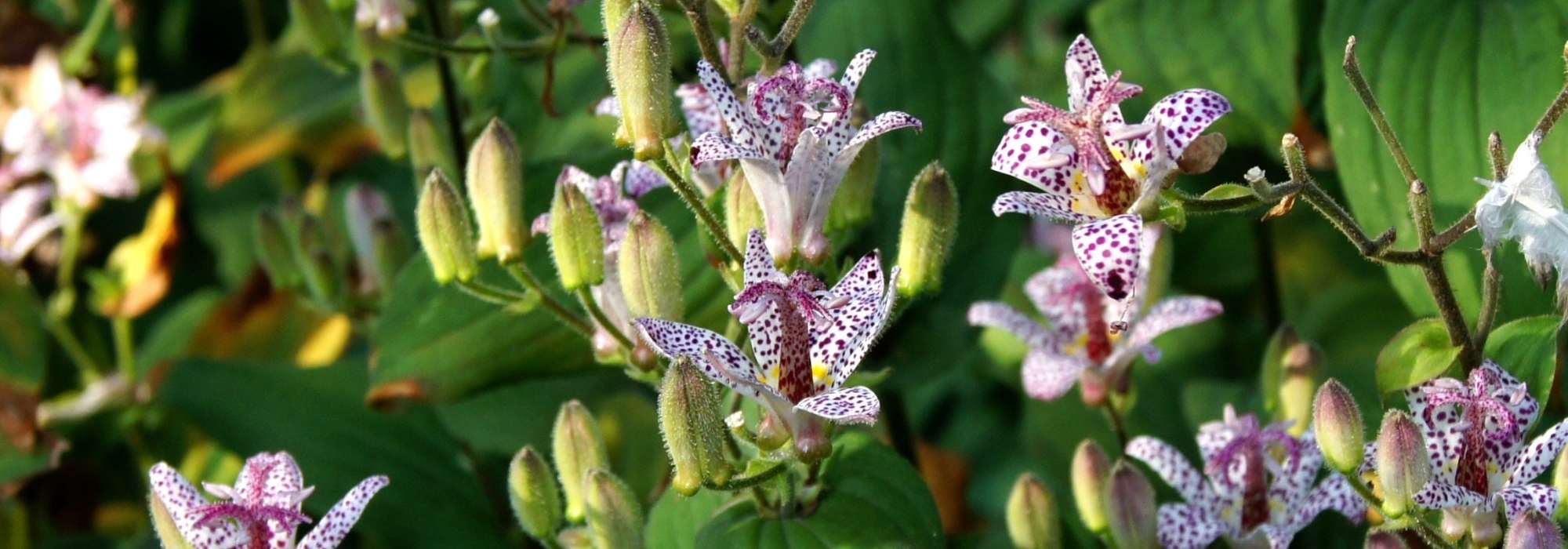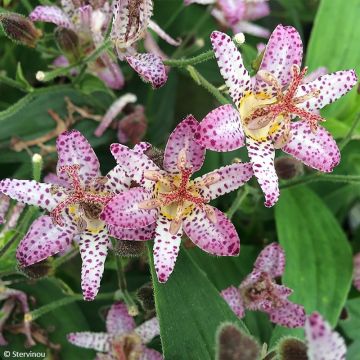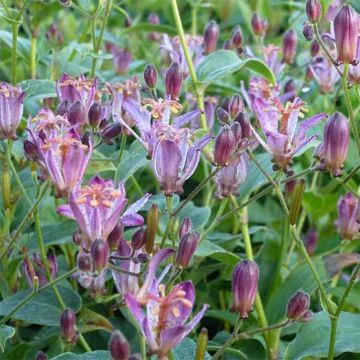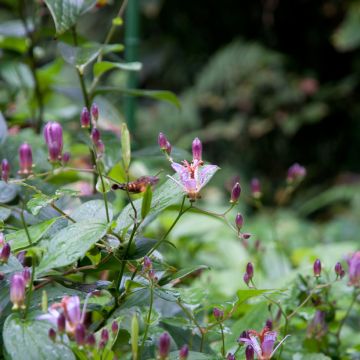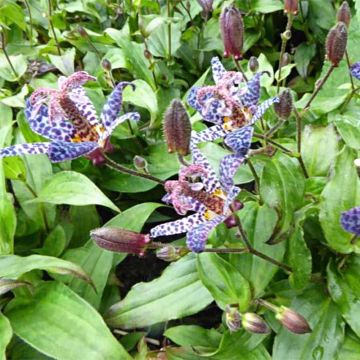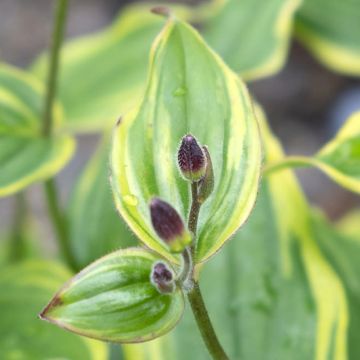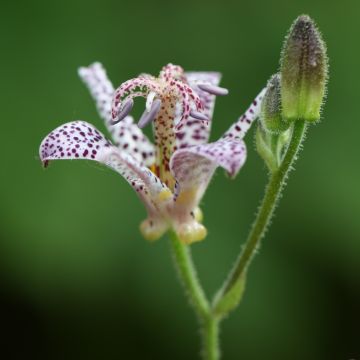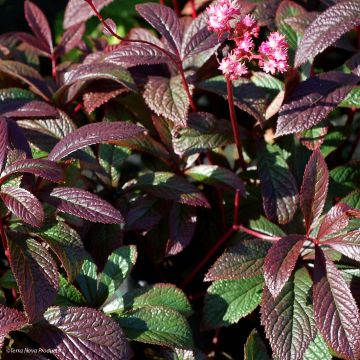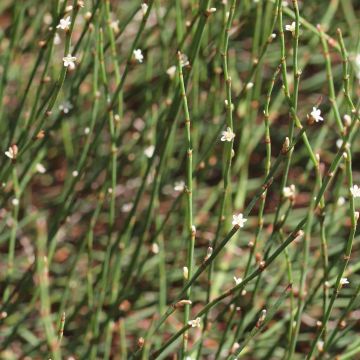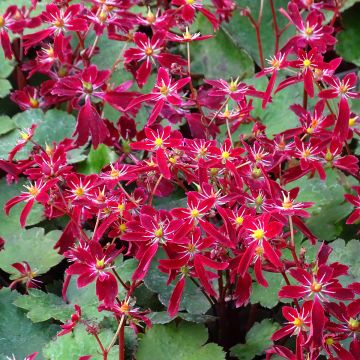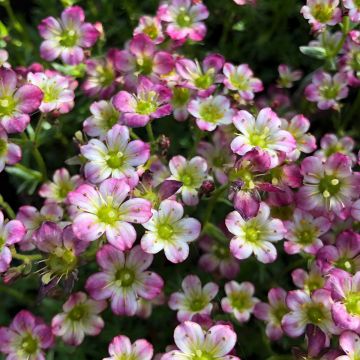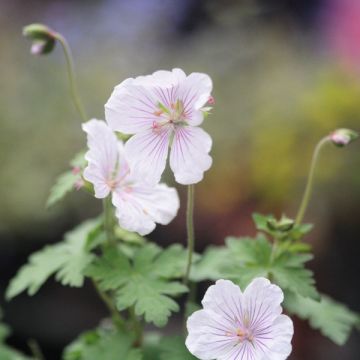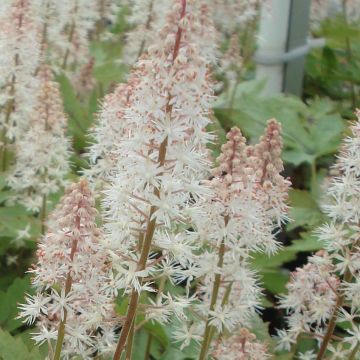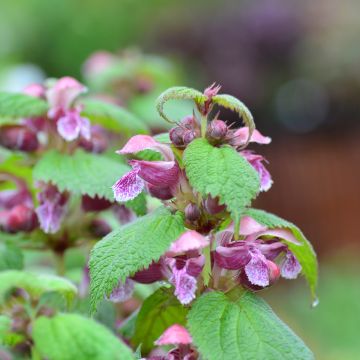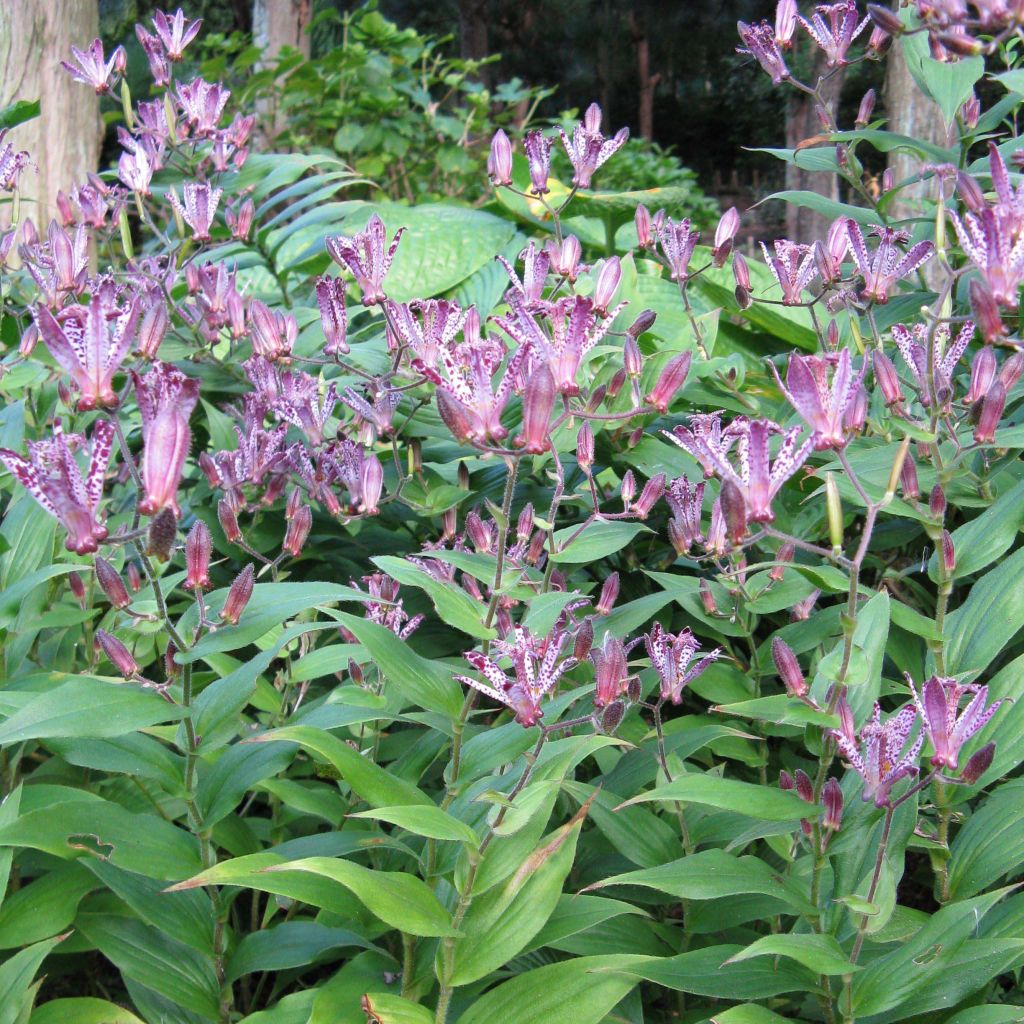

Tricyrtis hirta x formosana Sinonome
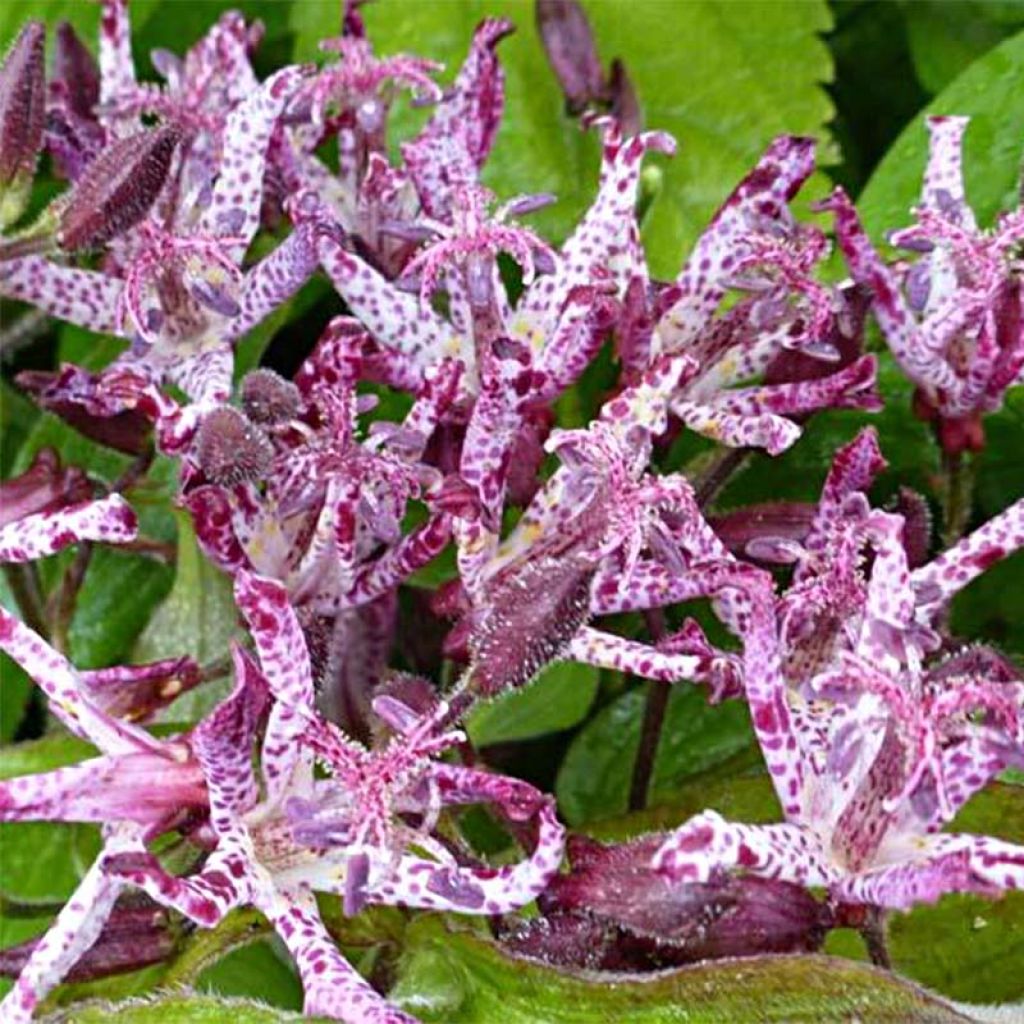

Tricyrtis hirta x formosana Sinonome


Tricyrtis hirta x formosana Sinonome
Tricyrtis hirta x formosana Sinonome
Tricyrtis hirta x formosana Sinonome
Lis crapaud, Tricyrtide hérissée, Tricyrtide du Japon, Lys des crapauds
Plant with 4 leaves at the base of the stump... I am waiting for September, the month of flowering, to make a statement.
Claire, 13/04/2019
Special offer!
Receive a €20 voucher for any order over €90 (excluding delivery costs, credit notes, and plastic-free options)!
1- Add your favorite plants to your cart.
2- Once you have reached €90, confirm your order (you can even choose the delivery date!).
3- As soon as your order is shipped, you will receive an email containing your voucher code, valid for 3 months (90 days).
Your voucher is unique and can only be used once, for any order with a minimum value of €20, excluding delivery costs.
Can be combined with other current offers, non-divisible and non-refundable.
Home or relay delivery (depending on size and destination)
Schedule delivery date,
and select date in basket
This plant carries a 12 months recovery warranty
More information
We guarantee the quality of our plants for a full growing cycle, and will replace at our expense any plant that fails to recover under normal climatic and planting conditions.
Would this plant suit my garden?
Set up your Plantfit profile →
Description
Tricyrtis 'Sinonome', sometimes nicknamed Toad Lily, is a hybrid variety initially developed in Japan for the cut flower industry. Gardens enthusiasts quickly adopted it because the vigorous and floriferous plant is as beautiful as it is easy to grow in the shade. Its flowers, reminiscent of small white orchids, gradually become stained with purple-red to violet macules over the course of hours. They appear in late summer, for several weeks, carried by sturdy stems adorned with beautiful glossy green leaves. This perennial plant anchored on a powerful stump is fully hardy and very durable in humus-rich and moist soil. Its flowers are splendid and last a long time in a vase.
Tricyrtis 'Sinonome' is the result of hybridisation between Tricyrtis hirta and T. formosana. Both are rhizomatous perennial plants of the lily family originally from the humid forests of Japan and Taiwan. These highly ornamental species are now widely cultivated in all temperate countries. Planted in a rather damp, shady area with a bit of sun, this 'Sinonome' Toad Lily quickly grows to 70 cm (28in) in height and spreads fairly rapidly thanks to its slightly running stump. The plant forms deciduous clumps with solid upright stems, quite thin, bearing sheathing leaves 10 cm (4in) long, ovate with cordate bases, of a shiny dark green. They are crossed by prominent parallel veins. Flowering extends from early September to late October, in the form of terminal cymes bearing beautiful small 3 cm (1in) diameter flowers, star-shaped, well open, whose colour evolves as they ripen, from white to white with purple-violet maculations. They are composed of 6 tepals and a central column called a spur, bearing dark pink speckled stigmas. A white throat speckled with yellow occupies the centre of the corolla.
Still too little used in our gardens, it will happily share the ground with hostas and ferns, flowering during the season when most other woodland flowers have faded. While early frosts can harm its flowering, it is a very hardy plant that will bring an exotic and unexpected touch to a shaded rock garden. Perfectly at home among the round and mossy stones of a Japanese garden, it also thrives well in a pot on a shaded patio where its lanceolate foliage is decorative from spring to autumn.
Attention, young shoots are often targeted by small grey slugs!
Tricyrtis hirta x formosana Sinonome in pictures
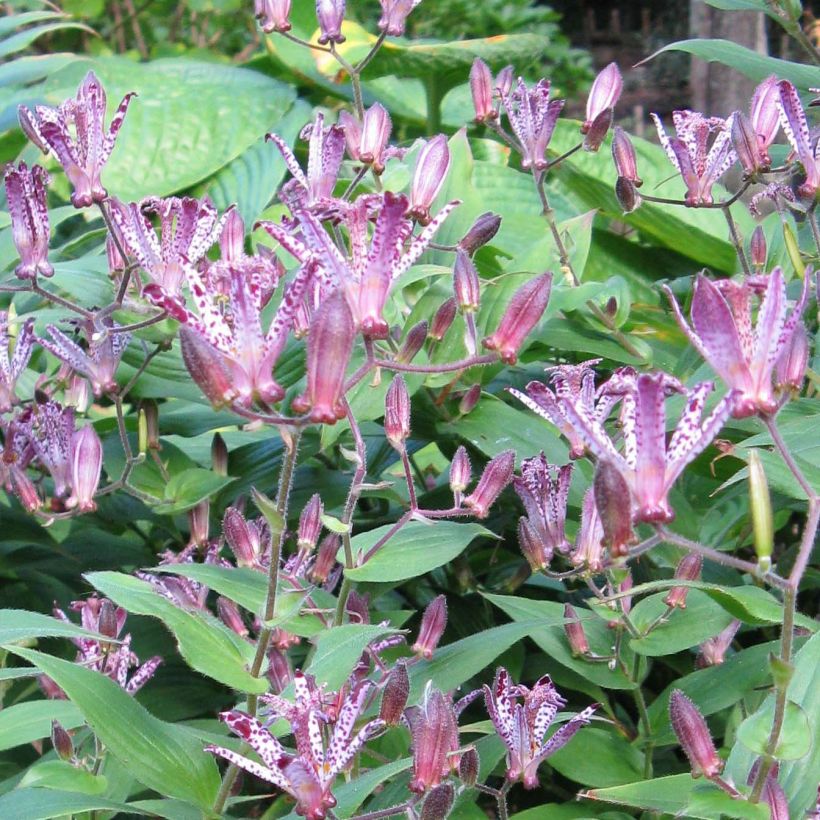

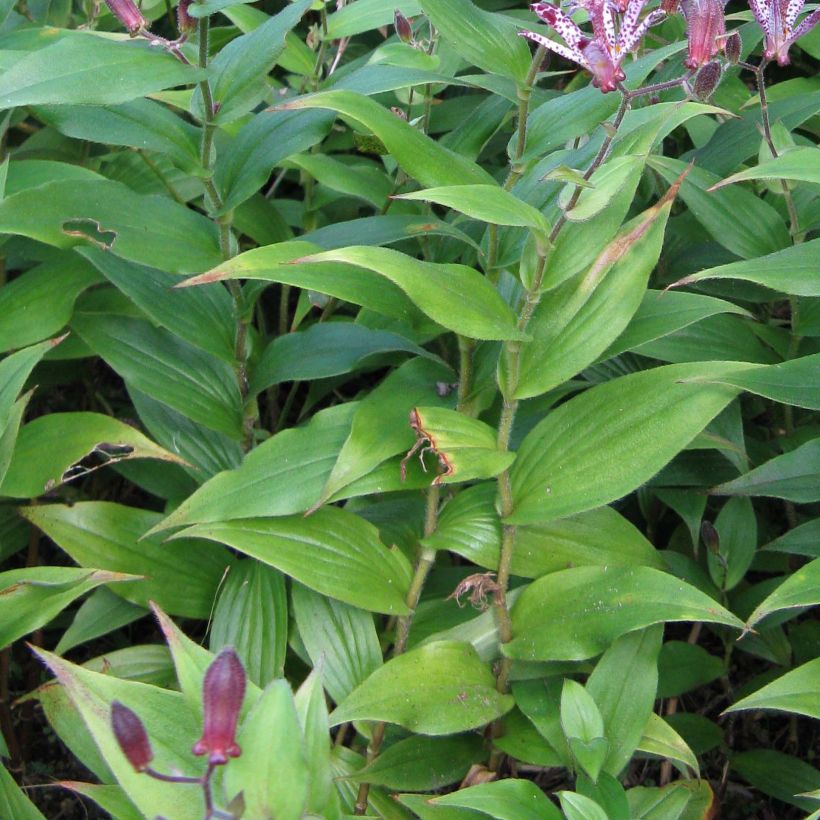



Flowering
Foliage
Plant habit
Botanical data
Tricyrtis
hirta x formosana
Sinonome
Convallariaceae
Lis crapaud, Tricyrtide hérissée, Tricyrtide du Japon, Lys des crapauds
Cultivar or hybrid
Other Tricyrtis - Japanese Toad Lily
View all →Planting and care
Plant Trycirtis Sinonome in a fairly shaded, shady position in the hottest regions of our country. However, it can be planted in light sun north of the Loire if watering is followed and the soil remains consistently moist.
Plant it in a fresh, humus-rich, slightly acidic or neutral, wind-sheltered soil that would otherwise bring down the tall flowering stems, both in the ground and in a pot. The flowers will be later if the summer is dry, returning with the September rains, which is not too serious in regions where the autumn is mild and long. However, when frosts are early, late flowering will be destroyed by the cold. The soil should not completely dry out in spring and summer, and ensure regular watering during periods of summer drought. Mulching will help keep the plant's base damp.
Young shoots are often targeted by small grey slugs. Spread ashes, crushed eggshells, or granules that are suitable for organic farming (which are not harmful to animals that consume slugs).
Planting period
Intended location
Care
Planting & care advice
-
, onOrder confirmed
Reply from on Promesse de fleurs
Similar products
Haven't found what you were looking for?
Hardiness is the lowest winter temperature a plant can endure without suffering serious damage or even dying. However, hardiness is affected by location (a sheltered area, such as a patio), protection (winter cover) and soil type (hardiness is improved by well-drained soil).

Photo Sharing Terms & Conditions
In order to encourage gardeners to interact and share their experiences, Promesse de fleurs offers various media enabling content to be uploaded onto its Site - in particular via the ‘Photo sharing’ module.
The User agrees to refrain from:
- Posting any content that is illegal, prejudicial, insulting, racist, inciteful to hatred, revisionist, contrary to public decency, that infringes on privacy or on the privacy rights of third parties, in particular the publicity rights of persons and goods, intellectual property rights, or the right to privacy.
- Submitting content on behalf of a third party;
- Impersonate the identity of a third party and/or publish any personal information about a third party;
In general, the User undertakes to refrain from any unethical behaviour.
All Content (in particular text, comments, files, images, photos, videos, creative works, etc.), which may be subject to property or intellectual property rights, image or other private rights, shall remain the property of the User, subject to the limited rights granted by the terms of the licence granted by Promesse de fleurs as stated below. Users are at liberty to publish or not to publish such Content on the Site, notably via the ‘Photo Sharing’ facility, and accept that this Content shall be made public and freely accessible, notably on the Internet.
Users further acknowledge, undertake to have ,and guarantee that they hold all necessary rights and permissions to publish such material on the Site, in particular with regard to the legislation in force pertaining to any privacy, property, intellectual property, image, or contractual rights, or rights of any other nature. By publishing such Content on the Site, Users acknowledge accepting full liability as publishers of the Content within the meaning of the law, and grant Promesse de fleurs, free of charge, an inclusive, worldwide licence for the said Content for the entire duration of its publication, including all reproduction, representation, up/downloading, displaying, performing, transmission, and storage rights.
Users also grant permission for their name to be linked to the Content and accept that this link may not always be made available.
By engaging in posting material, Users consent to their Content becoming automatically accessible on the Internet, in particular on other sites and/or blogs and/or web pages of the Promesse de fleurs site, including in particular social pages and the Promesse de fleurs catalogue.
Users may secure the removal of entrusted content free of charge by issuing a simple request via our contact form.
The flowering period indicated on our website applies to countries and regions located in USDA zone 8 (France, the United Kingdom, Ireland, the Netherlands, etc.)
It will vary according to where you live:
- In zones 9 to 10 (Italy, Spain, Greece, etc.), flowering will occur about 2 to 4 weeks earlier.
- In zones 6 to 7 (Germany, Poland, Slovenia, and lower mountainous regions), flowering will be delayed by 2 to 3 weeks.
- In zone 5 (Central Europe, Scandinavia), blooming will be delayed by 3 to 5 weeks.
In temperate climates, pruning of spring-flowering shrubs (forsythia, spireas, etc.) should be done just after flowering.
Pruning of summer-flowering shrubs (Indian Lilac, Perovskia, etc.) can be done in winter or spring.
In cold regions as well as with frost-sensitive plants, avoid pruning too early when severe frosts may still occur.
The planting period indicated on our website applies to countries and regions located in USDA zone 8 (France, United Kingdom, Ireland, Netherlands).
It will vary according to where you live:
- In Mediterranean zones (Marseille, Madrid, Milan, etc.), autumn and winter are the best planting periods.
- In continental zones (Strasbourg, Munich, Vienna, etc.), delay planting by 2 to 3 weeks in spring and bring it forward by 2 to 4 weeks in autumn.
- In mountainous regions (the Alps, Pyrenees, Carpathians, etc.), it is best to plant in late spring (May-June) or late summer (August-September).
The harvesting period indicated on our website applies to countries and regions in USDA zone 8 (France, England, Ireland, the Netherlands).
In colder areas (Scandinavia, Poland, Austria...) fruit and vegetable harvests are likely to be delayed by 3-4 weeks.
In warmer areas (Italy, Spain, Greece, etc.), harvesting will probably take place earlier, depending on weather conditions.
The sowing periods indicated on our website apply to countries and regions within USDA Zone 8 (France, UK, Ireland, Netherlands).
In colder areas (Scandinavia, Poland, Austria...), delay any outdoor sowing by 3-4 weeks, or sow under glass.
In warmer climes (Italy, Spain, Greece, etc.), bring outdoor sowing forward by a few weeks.






























